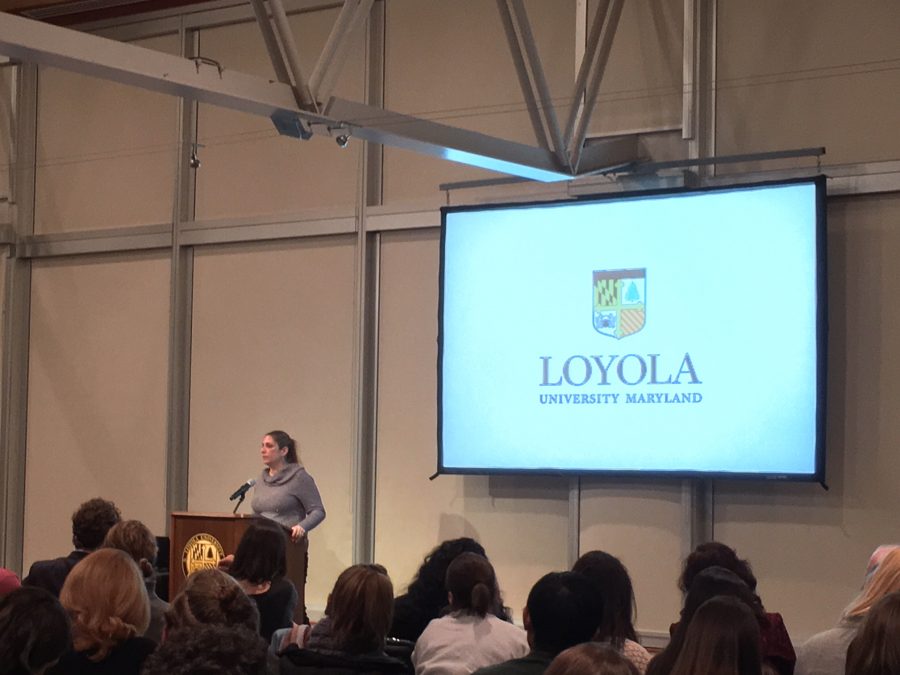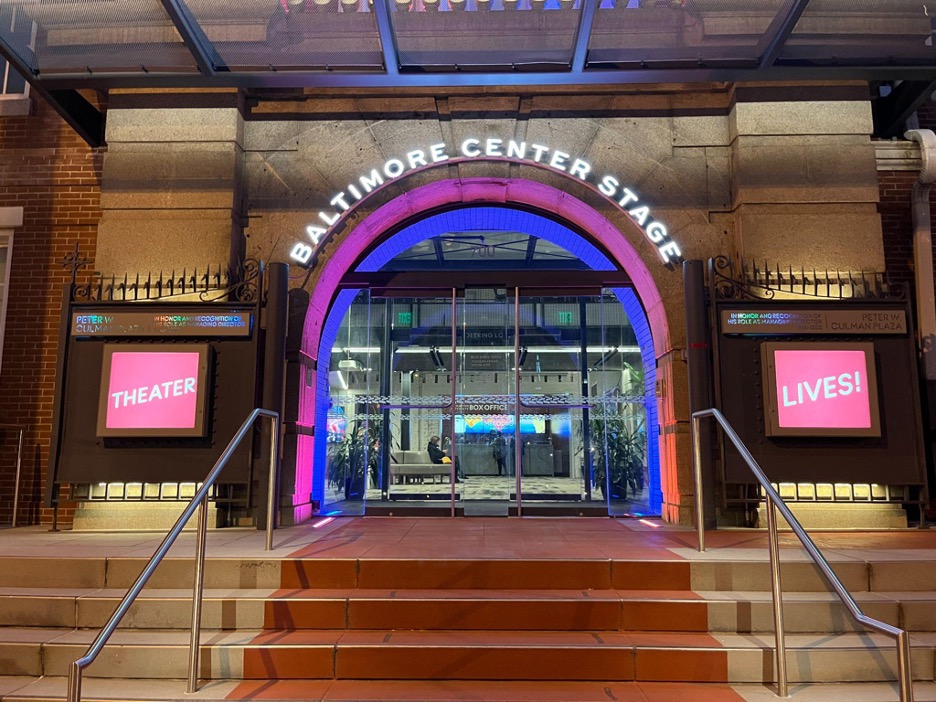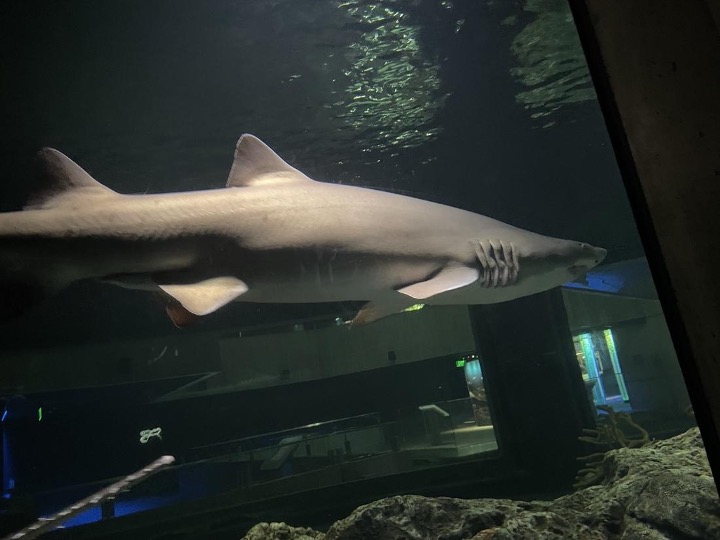On Jan. 24 the Bunting Peace and Justice Speaker Series welcomed Gimena Sánchez-Garzoli, the Director for the Andes at the Washington Office on Latin America (WOLA) Director of the Office of Peace and Justice Dr. John Kiess called the lecture the third installment in its “world tour” that has taken audience members from Baltimore to India, and now to Colombia.
The Bunting Peace and Justice Series “hosts speakers and events that contribute to raising awareness about peace and justice issues,” according to its website. During her talk, Sánchez-Garzoli discussed the current status of the peace process in Colombia, a country plagued by civil conflict since the 1950s.
In the 1950s, a period known as La Violencia displaced over one million people and led to the formation of the Revolutionary Armed Forces of Colombia (known in Spanish as FARC), one of Colombia’s most combative guerrilla groups.
The FARC formed in order “to address inequities. Basically, there wasn’t an effective response from the state in terms of services,” Sánchez-Garzoli said.
In the 1960s and 70s, funding for the FARC grew in terms of money and armaments, and in the late 1980s, a lucrative cocaine trade was formed based on the cultivation of the cocoa plant.
“[That] completely changed the conflict in Colombia,” Sánchez-Garzoli said.
In the 1990s, the Colombian state began to formally support coalitions of local self-defense groups to combat the FARC and other guerrilla groups.
By the early 2000s, the effects of these conflicts with the guerrilla groups were starting to show. The country had the highest concentration of landmines after Afghanistan, and over 3,000 people disappeared in kidnappings. Additionally, Colombia has been consistently ranked in the top three globally for the highest number of internally displaced persons. At over 6 million people displaced, Colombia currently sits at No. 2 behind Syria.
“There was a vacuum of security that permitted all sorts of atrocities,” Sánchez-Garzoli said.
For more detailed information on the conflict itself, visit the Council on Foreign Relation’s page outlining the conflict.
“One would think that peace and reconciliation would be completely impossible,” Sánchez-Garzoli said.
And yet it wasn’t. She cites three global reasons for the facilitation of peace in such an unlikely place.
First, after the 9/11 terrorist attacks, the global war on terror began to “define conflicts very differently,” according to Sánchez-Garzoli.
Any arms taken against the state was viewed as an act of terror. By doing so, the FARC was placed on an international terrorist list, making it difficult for the group to achieve formal relations and earn legitimacy as a group outside of Colombia, ultimately weakening its power.
Second, at this point, most of Latin America was at peace. Only Colombia was in a state of conflict, creating a desire for peace within the country.
Third, the U.S. helped to find a plan from the late 1990s to the early 2000s that severely impacted the FARC, according to Sánchez-Garzoli. The campaign helped to defeat the group militarily, to change the areas it controlled, and to shut down its communications.
The peace agreement was largely facilitated by Norway, but Cuba and Venezuela had important roles as well. These negotiation meetings were narrow and didn’t feature the big assemblies with long lists of concessions that Colombia had been used to seeing.
“Basically it focused on very specific points but didn’t engage in broader issues in society until later, which allowed parties to gain confidence with each other,” Sánchez-Garzoli said.
These points included land ownership reform, political participation, transitional justice for the victims post-conflict, as well as a general end to the conflict at hand.
The negotiations were innovative according to Sánchez-Garzoli for two reasons. First, it was determined by the parties that they would work with the U.N. to talk with the groups of victims and hear what they wanted in terms of reconciliation from the FARC. This decision helped the negotiations to occur relatively quickly, in turn allowing the meetings to be kept closed and secretive without any information leaks that would destabilize the process.
Second, a sub-committee on gender gave a more in-depth look as to how the agreement affected gender-related issues within the country.
While this formal agreement was being penned behind closed doors, outside there were joint agreements and activities being held that created trust between the government and the FARC. These included land mine search and removal, search parties for the 3,000 disappeared persons, giving land to the indigenous population, and reduction of the drug trade.
Additionally, then-U.S. President Barack Obama made the deliberate decision not to involve the U.S. in the peace negotiations. He sent an envoy of advisors to Colombia to help the process move along if needed, but they did not have an explicit role in the negotiations themselves.
By Aug. 24, 2016, the agreement was signed by the relevant parties. It was a day of celebration, with victims singing songs of reconciliation and presidents from the region making an appearance in approval of the accord.
However, by October, there were complaints about it being a closed discussion and that the public did not have the opportunity to share what they wanted to be featured in the agreement. So the accord was put to a referendum, giving the general population the chance to vote whether the agreement will become official law.
Despite the great victory that the agreement was in the first place, the public completely rejected it.
Sánchez-Garzoli cites multiple causes for this outcome. First, a big hurricane impacted voter turnout. Second, displaced people had difficulties registering to vote.
Third, and most important for her, is the different evangelical or special interest groups that made the claim to voters that the accord was imposing a certain gender ideology on Colombians with its gender protections. These protections included allowing greater female access to political party participation, ending amnesty for sexual assaults, and protection for the LGBTQ population.
“[The referendum result] was quite a surprise and turned everything upside down,” Sánchez-Garzoli said.
In November 2017 a new accord was signed, and there was no resulting violence from the FARC, even though they were not included in the agreement.
Sánchez-Garzoli called this “pretty amazing.”
Now, the Colombian Congress is demanding multiple changes before they ratify the agreement officially. These changes will be overseen by the most diverse tribunal in Colombia’s history in terms of gender, ethnic group, and region.
Colombia remains in an ambiguous place, according to Sánchez-Garzoli. The FARC has demobilized greatly and has turned in a majority of their armaments, as confirmed by the U.N. However, there are other guerrilla groups that are trying to use this opportunity to gain support.
Furthermore, the Colombian government has stopped upholding its commitment to these groups in terms of land access.
“If it continues, people will turn away from the peace process,” Sánchez-Garzoli said.
Additionally, over 100 social leaders have been killed at the hands of these guerrilla groups. For Sánchez-Garzoli, reduction of violence against these leaders is what part of peace in Colombia would look like as these leaders are defending the peace agreement.
“The diversity of Colombia is being gunned down,” she said.
And due to a lack of institutional capacity on the government’s part, these murders are going unpunished. A lack of institutional capacity also means a general lack of funding to support the terms of the peace agreement.
“If you don’t have funding to carry this forward, you will see collapse,” she said.
Discussions about Colombia like this one fostered by the Office of Peace and Justice are important to her as well because they offer the opportunity for Colombia to receive funding to support this peace agreement.
President Donald Trump has cut 30 percent of all foreign aid, cutting also the envoy to Colombia, which Sánchez-Garzoli says was very important for the peace agreement in the first place.
Congress has passed bills that will continue to send monetary aid to Colombia, but it is unclear how long those funds will last. Unless Americans contact their representatives and tell them why Colombia matters.
“It’s important to educate yourselves on Colombia,” Sánchez-Garzoli said.

















































































































Anonymous • Jan 29, 2018 at 10:49 am
4.5